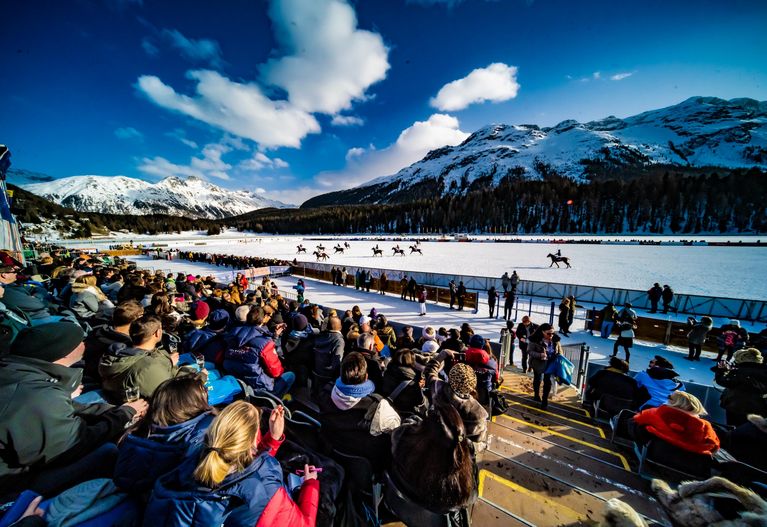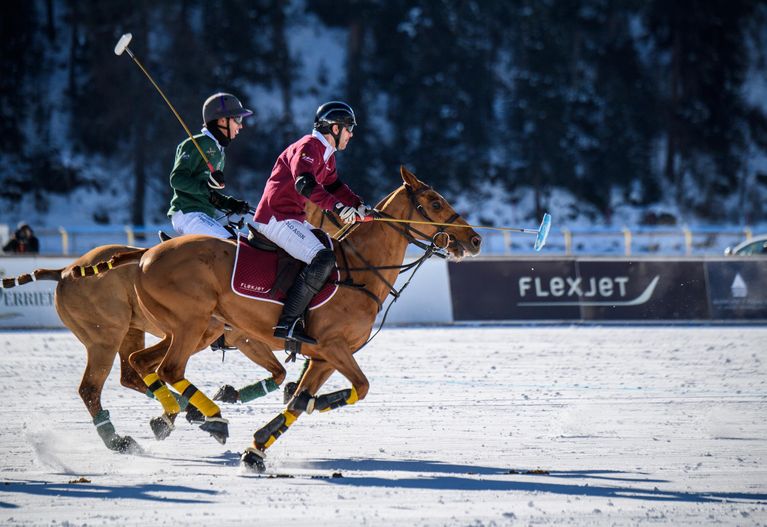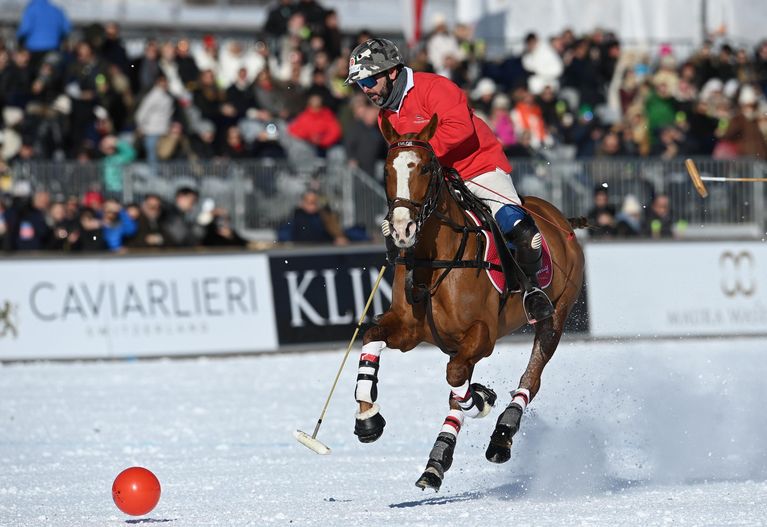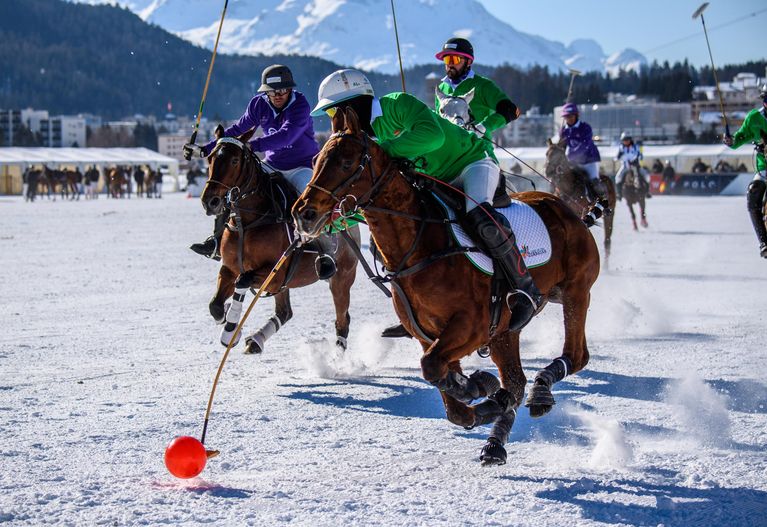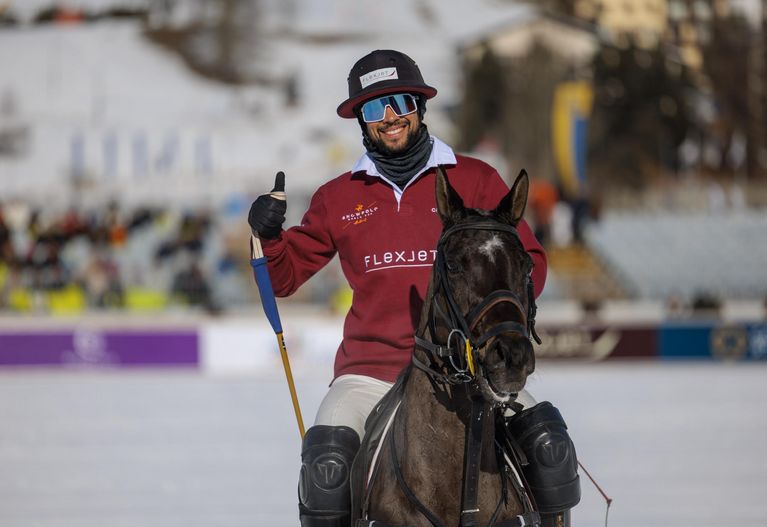
Rules
The rules of Polo
For the pros: FIP / SPA rules apply. For all others: Here is a short introduction to the game and the rules of polo.
Polo may delude you by its seeming simplicity. The game, on the contrary, is governed by a multitude of rules. These rules were written with one overriding consideration in mind: the safety of the ponies and their riders. Ensuring a balanced, competitive and fluid play lies at the heart of these rules. This brief outline of the basic rules may help you get more out of watching a match should you be a novice to the game.
The field
Polo can be played on practically any level field of sufficient size, as long as the ground is firm and has been constantly maintained. The dimensions of an official international polo field are 182 metres wide by 274 metres long. As the physical strain is greater when playing polo on snow rather than on grass—compounded by the higher altitudes usually played at in winter compared to summer—snow polo is played on smaller fields. The field in St. Moritz usually measures 80 by 200 metres—this can vary depending on weather and snow conditions. The goal is 7.3 meters wide and delimited on the sides by two posts. Unlike other goals, it has no crossbar at the top.
Teams
There are four players to each team. The captain, who leads the team’s tactics, usually wears number 3. Number 4, also known as back, is in charge of the defence. The other two players are attackers.
Handicap
Each polo player is rated on a scale from -2 to 10. A handicap of -2 denotes a novice player, while just a handful of players in the world hold the maximum handicap of +10. The handicap of a team is the sum of the handicaps of all four team members.
Tournament
Tournaments are played at three levels—low, medium, or high goal. The team’s handicap, being the sum of the handicaps of all four team members, must meet the level played at. When two teams compete in a match, any difference in their handicaps is levelled out by allocating the corresponding number of goals to the team with the lower handicap.
Chukka
Depending on the tournament, a polo match will consist of four, five or six time periods known as chukkas. In high goal snow polo, a match will normally consist of four chukkas lasting 7½ minutes each except for the last one which is 7 minutes. In any one match, a pony may only be played in a maximum of two, non-consecutive chukkas.
Direction of play
The direction of play changes every time a goal is scored.
"Right of way" and "line of the ball"
The right of way is the primary rule of the sport. Whenever the ball is in play, the player right on, or at the smallest angle to, the line of the ball will have the right of way, with the line of the ball being the path along which the ball is or has been travelling. No player is allowed to position himself and his pony on the line of the ball if this poses the slightest risk of collision with the player currently holding the right of way.
"Hooking" and "riding off"
A player can only lose his right of way by being ridden off or hooked by another player. When hooking, a player will be using his stick to prevent the player holding the right of way from retrieving or striking the ball. He will to do so by attempting to block the opponent’s stick during a swing or while he is tapping or dribbling the ball. It is not allowed to hook above the body of the opponent’s pony. A player trying to ride off the player with the right of way will be attempting to bring him off his course. This may only be done by riding in parallel to the player holding the right of way and not at an angle.
Tapping techniques
The stick (or mallet) is always held in the player’s right hand. The ball will generally be hit on the right side of the pony known as the offside. Tapping may be either forwards (offside forehand) or backwards (offside backhand). In order to hit on the pony’s left side, doing a so called nearside play, a player must loop over his right hand holding the mallet over to the pony’s left side requiring him to twist in his saddle. Under the neck refers to strokes performed in front of, or under, the neck of the pony. One of the trickiest manoeuvres is a tail stroke, carried out to the rear of the horse.
